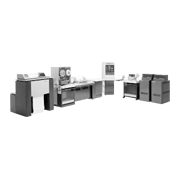This was a small computer announced by Fuji Tsushinki Manufacturing Corporation (currently Fujitsu) in March 1965. It was developed primarily for economy (cost per day in the minimal configuration was 10,000 yen per day) and ease of use, and it extended the base of computer users. The FACOM 230-10 had capabilities not available with other machines at the time (such as "kana"-capable COBOL, sorting capability, software paging, and expansion using the modular "building block" system), and it was widely used not only for small-scale office computation, but as a branch computer for mid-size and large computers. After it went on sale, it became explosively popular. The Fujitsu Nagano plant was built to meet the sudden demand, and in a little more than 5 years, it became a best seller -- Fujitsu's first computer to sell more than 1,000 units.
Below is a list of the characteristic functions of the FACOM 230-10. For the main specifications of this model, see the Table: Comparison between the FACOM 230-15 and existing models at the time.
- (1)The FACOM 230-10 operated on a single-phase 100-volt power supply for ease of installation.
- (2)It featured magnetic-core memory with a cycle time of 2.0 microseconds, which was considered very fast at the time. Four-kilobyte and eight-kilobyte magnetic-core memory configurations were available.
- (3)The FACOM 230-10 had an auxiliary drum-file memory unit capable of storing 64 kilobytes (65,536 bytes) that was purposely developed for the FACOM 230-10. The file unit consisted of 128 tracks known as “strings” of 512 bytes each for data transfers.
- (4)The machine’s front operational panel was streamlined to include just the minimum necessary functionality.
- Two switches: A read-complete signal instruction switch and an alternation switch (ASW)
- Six keys: power on/off, standby/run, load instructions, start calculation, pause, and cancel
- (5)The FACOM 230-10 came with Kana-Character COBOL as its basic programming language. Fujitsu localized the global standard COBOL language for the Japanese market. The language used Japanese names for its instructions and featured both real-time programming functions and functions for randomly accessing the drum file.


